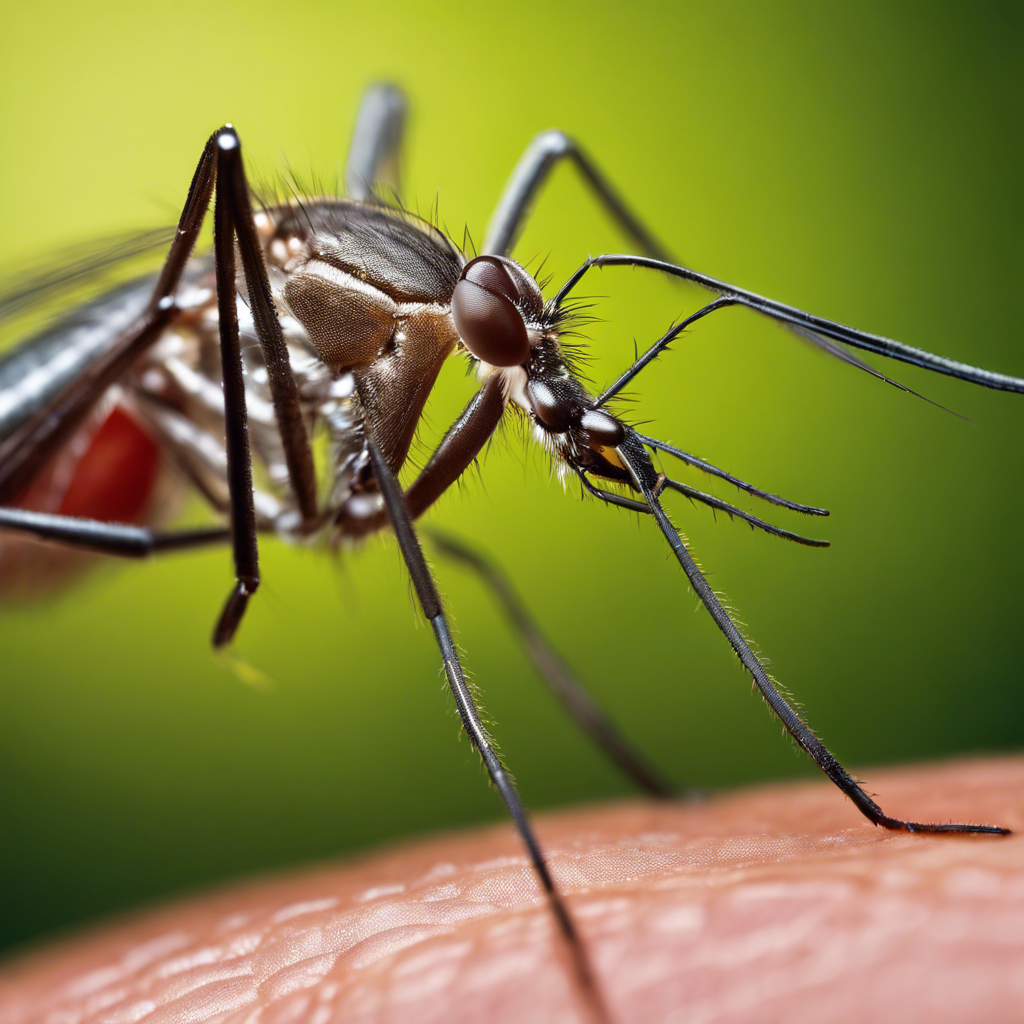Ever wonder what attracts those pesky mosquitoes? Your genetic makeup, body odors, and skin microbiota are key players. They’re drawn to skin odors like carboxylic acids and are guided by your exhaled carbon dioxide. Mosquitoes love your body heat, using it as a homing signal. Visual cues and taste sensors in their legs also come into play. These factors create a complex web of attraction. If you want to uncover the detailed science of mosquito allure, there’s a world of fascinating information to explore.
Key Takeaways
- Genetic predispositions, body odors, and skin microbiota influence mosquito attraction.
- Carbon dioxide acts as a homing signal for mosquitoes, guiding them towards hosts efficiently.
- Skin odors, like carboxylic acids, play a significant role in attracting mosquitoes.
- Mosquitoes are drawn to body heat, using it as a beacon for locating hosts.
- Visual cues and taste sensors also contribute to the complex mechanisms of mosquito attraction.
Factors Influencing Mosquito Attraction
Analyzing the factors that influence mosquito attraction reveals a complex interplay of genetic predispositions, body odors, and skin microbiota. Mosquitoes are drawn to individuals based on a combination of factors such as the presence of specific compounds like carboxylic acids on the skin. Your body odors, influenced by genetic factors, play a significant role in determining your attractiveness to mosquitoes. Additionally, the diversity of your skin microbiota can also impact how appealing you’re to these insects.
Understanding the intricacies of human attractiveness to mosquitoes involves recognizing that it’s not just one factor at play, but rather a combination of genetic predispositions, body odors, and the composition of your skin microbiota. As you explore further into the science behind mosquito attraction, you start to see how intricate and nuanced these interactions are. By being aware of these factors, you can better prepare and protect yourself from potential mosquito bites.
Carbon Dioxide Detection Mechanism
You notice how mosquitoes are drawn to the scent of carbon dioxide, a key component of their attraction mechanism.
As you exhale, you release this gas, which acts as a homing signal for these blood-seeking insects.
Their ability to pinpoint carbon dioxide gradients allows them to zero in on potential hosts efficiently.
CO2 Sensing Mechanism
Detecting carbon dioxide (CO2), mosquitoes utilize specialized sensory organs known as sensilla to locate potential hosts for blood meals. Here’s how the CO2 sensing mechanism works:
- Sensory Organs: Mosquitoes possess sensilla, which are tiny hair-like structures on their antennae that house receptors sensitive to CO2 levels in the environment.
- Receptor Sensitivity: These receptors on the antennae enable mosquitoes to detect even slight changes in CO2 concentration, guiding them towards potential hosts like humans.
- Host-Seeking Behavior: When mosquitoes sense increased CO2 levels near a host, it serves as an essential indicator of a potential blood meal, triggering their host-seeking behavior and directing them towards their next target.
Understanding this intricate CO2 sensing mechanism sheds light on how mosquitoes effectively locate and target their hosts for a blood meal.
CO2 Attraction Process
When seeking a blood meal, mosquitoes are primarily attracted to hosts through their detection of carbon dioxide exhaled by them. Carbon dioxide acts as a potent attractant for mosquitoes, drawing them towards potential hosts for feeding. Mosquitoes possess specialized receptors on their antennae that are highly sensitive to carbon dioxide levels in the environment. As hosts exhale more carbon dioxide, they become increasingly attractive to mosquitoes, making them prime targets for feeding. The ability of mosquitoes to sense and follow carbon dioxide gradients enables them to efficiently locate and feed on hosts. This sophisticated mechanism allows mosquitoes to pinpoint their targets with remarkable precision, ensuring a successful blood meal.
| Carbon Dioxide Attraction Process | |
|---|---|
| Key Factor | Role |
| Carbon dioxide | Primary attractant |
| Mosquito receptors | Sensitive to CO2 levels |
| Host emissions | Increase attractiveness |
| Environment | Determines CO2 gradients |
| Feeding behavior | Facilitated by CO2 sensing |
Role of Skin Odors in Attraction
Skin odors, particularly carboxylic acids, play a significant role in attracting mosquitoes. These compounds act as powerful attractants for mosquitoes like Aedes aegypti, drawing them towards human hosts with higher concentrations of carboxylic acids on their skin. Understanding the importance of skin odors in mosquito attraction is vital for developing effective strategies to prevent mosquito bites.
- Carboxylic Acids Attract Mosquitoes: Higher levels of carboxylic acids on the skin make individuals more appealing to mosquitoes, increasing the likelihood of being targeted for a bite.
- Specific Compounds Drive Attraction: Specific compounds, such as carboxylic acids, are essential in the process of attracting mosquitoes to human hosts, highlighting the significance of skin odors in this interaction.
- Research Insights: Experts like Dr. Leslie Vosshall have conducted research identifying skin compounds like carboxylic acids that play a pivotal role in attracting mosquitoes, shedding light on potential avenues for mosquito bite prevention.
Impact of Body Heat on Mosquitoes
Your body heat plays a significant role in attracting mosquitoes, drawing them towards you in search of a blood meal. Mosquitoes are naturally inclined to seek out warm-blooded hosts, and the heat radiating from your body acts as a beacon for these pests.
The higher your body temperature, the more alluring you become to mosquitoes, increasing the chances of getting bitten.
Body Heat Attraction
In the domain of mosquito attraction, body heat stands as a significant magnet drawing these blood-seeking insects towards their human hosts. Here’s why body heat is important in the mosquito-human interaction:
- Thermal Sensors: Mosquitoes use these sensors to detect temperature variations, honing in on areas of higher body heat.
- Increased Biting Activity: Higher body heat levels can make individuals more appealing to mosquitoes, leading to heightened biting activity.
- Selection of Human Hosts: Body heat plays a vital role in the selection process for mosquitoes seeking blood meals, guiding them to areas like the head, neck, and exposed skin.
Understanding the significance of body heat in mosquito attraction can aid in the development of effective prevention strategies to reduce mosquito bites.
Temperature Preference
Drawing upon the body heat attraction mechanism, the impact of temperature preference on mosquitoes reveals intricate insights into their host-seeking behavior. Mosquitoes are drawn to higher body temperatures, using this warmth as a thermal cue to locate potential hosts for blood feeding.
Human body heat plays a pivotal role in guiding mosquitoes towards warm-blooded targets, influencing their attractiveness to mosquitoes. Variability in body heat among individuals can affect their likelihood of being bitten, as mosquitoes prefer warmer temperatures indicative of a blood meal source.
Understanding the role of body heat in mosquito attraction sheds light on the complexities of their host-seeking behavior and highlights the significance of temperature preference in the intricate dance of mosquito attraction.
Heat-Seeking Behavior
Mosquitoes exhibit a keen heat-seeking behavior, using body heat as an essential cue to pinpoint warm-blooded hosts for their next blood meal. When it comes to attracting mosquitoes, your body heat plays a pivotal role in drawing them towards you:
- Heat Source: Your body’s warmth acts as a beacon for mosquitoes, guiding them towards their next blood source.
- Targeted Approach: Mosquitoes rely on heat-seeking behavior to zero in on warm-blooded hosts like yourself for their feeding.
- Temperature Appeal: Individuals with higher body temperatures are more likely to attract mosquitoes, making them prime targets for bites.
Your body’s heat not only serves as a comforting blanket for you but also as a dinner bell for these pesky insects seeking their next meal.
Visual Cues for Mosquito Attraction
Often overlooked, the intricate interplay of visual cues shapes the way mosquitoes navigate and seek out potential hosts for their next blood meal. Mosquitoes rely on visual cues, such as contrasts in light and dark colors, to locate potential hosts.
Their attraction to movement makes them more likely to land on moving targets, while the detection of body shape and size influences their decisions, with larger objects appearing more significant. These visual cues are essential in guiding mosquitoes towards suitable hosts for their blood meal sources.
Understanding how mosquitoes perceive these visual cues can help in developing effective strategies to prevent mosquito bites. By being aware of how mosquitoes use visual information to select their hosts, you can take precautions such as wearing light-colored clothing or avoiding sudden movements to reduce your attractiveness to these pesky insects.
Taste Sensors in Mosquito Legs
Taste sensors located in the legs of mosquitoes play a critical role in detecting specific chemicals on the skin of their hosts. These sensors are fundamental for guiding mosquitoes towards their blood meal sources, helping them assess the suitability of a host for feeding.
Here are three key points to help you understand the importance of taste sensors in mosquito legs:
- Guiding Feeding Behavior: Mosquitoes rely on taste receptors in their legs to identify key compounds that signal a potential blood meal, ensuring they find suitable hosts efficiently.
- Assessing Host Suitability: By using these taste sensors, mosquitoes can determine whether a host is suitable for feeding, enhancing their chances of a successful blood meal.
- Enhancing Attraction Mechanisms: Understanding how taste sensors in mosquito legs work provides valuable insights into their feeding behavior and attraction mechanisms, shedding light on the intricate processes that drive mosquito-host interactions.
Genetic Influences on Attraction
Influenced by genetic factors, body odor composition and human scent play a significant role in attracting mosquitoes. DNA, accounting for approximately 67% of mosquito attraction, showcases a strong genetic influence. Studies on identical twins reveal that they exhibit more similar levels of attraction to mosquitoes compared to fraternal twins, emphasizing the impact of genetic factors.
The Human Leukocyte Antigen (HLA) system, responsible for encoding human scent kairomones, also contributes to mosquito attraction. Variants in genes can impact the risk of mosquito-borne infections by creating diverse combinations of kairomones.
Understanding the genetic influences on mosquito attraction not only sheds light on why some individuals are more prone to mosquito bites but also highlights the complexity of the interactions between human genetics and the olfactory cues that draw mosquitoes in. This genetic predisposition to mosquito attraction underscores the importance of further research in developing targeted strategies for mosquito control and disease prevention.
Environmental Factors in Mosquito Attraction
Temperature, humidity, and vegetation are key environmental factors that greatly impact the attraction of mosquitoes. These factors play a vital role in determining the abundance and behavior of mosquitoes in a specific area.
Here are three ways in which environmental factors influence mosquito attraction:
- Temperature: Mosquitoes are more active in warm temperatures, with their activity peaking in the evenings when it’s cooler. Higher temperatures can also accelerate their breeding cycles, leading to a larger population of mosquitoes in a given area.
- Humidity: High humidity levels create ideal conditions for mosquitoes to thrive as they require moisture for breeding. Areas with high humidity levels are more likely to have a higher mosquito population compared to drier regions.
- Vegetation: Lush vegetation provides mosquitoes with resting and breeding sites. Additionally, certain plants emit odors that attract mosquitoes, making areas with dense vegetation more attractive to these insects.
Understanding how these environmental factors influence mosquito behavior is essential in mitigating the risk of mosquito-borne diseases and managing mosquito populations, especially as environmental changes due to factors like climate change continue to impact mosquito habitats.
Frequently Asked Questions
What Chemical in Your Body Attracts Mosquitoes?
Skin chemistry, specifically carboxylic acids, in your body attracts mosquitoes. High levels of these compounds on your skin make you more appealing to mosquitoes. Manipulating these chemicals could help reduce your attractiveness and potential mosquito bites.
What Makes You Attracted to Mosquitoes?
When you emit skin bacteria and body heat, mosquitoes are drawn to you by the scent of lactic acid and octenol. Your sweat glands release a cocktail of attractions, making your blood type and genetic factors play a role in their preference.
What Are the Stimuli That Attract Mosquitoes?
You emit body heat, carbon dioxide, body odor, skin bacteria, lactic acid, and octenol that attract mosquitoes. These environmental factors play a role in drawing them in, making you a target for their feeding habits.
What Is the Mosquito Attraction Experiment?
To understand the mosquito attraction experiment, consider how researchers identified key skin compounds like carboxylic acids that draw mosquitoes in. Individuals with higher levels of these compounds were found more attractive, impacting mosquito feeding habits and repellent strategies.





